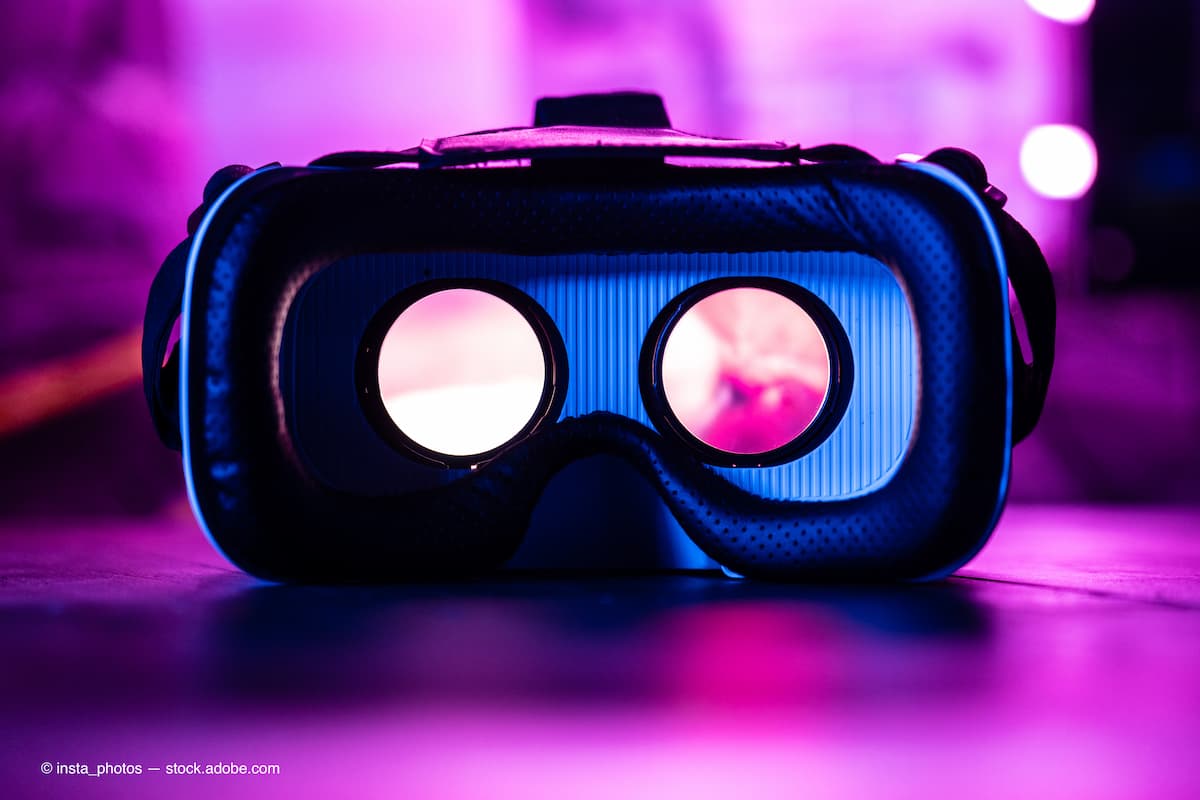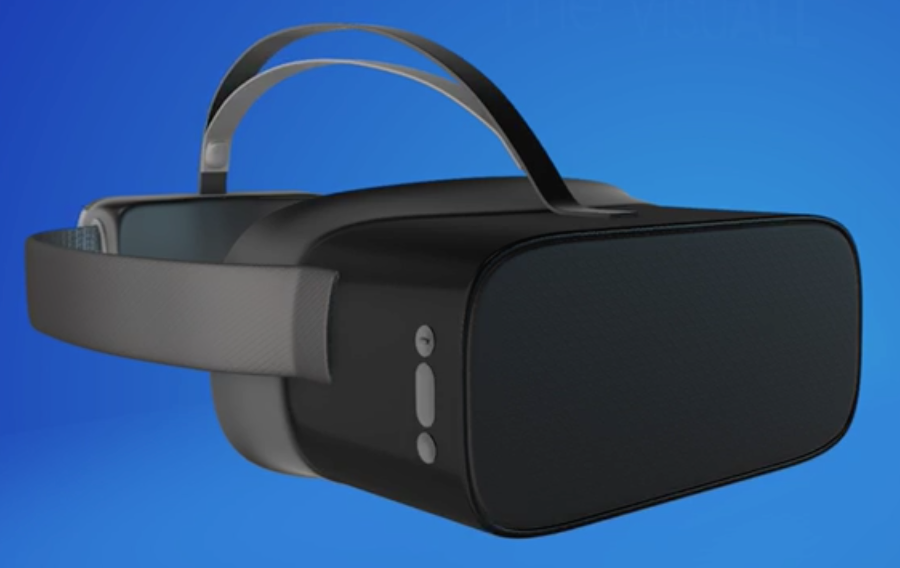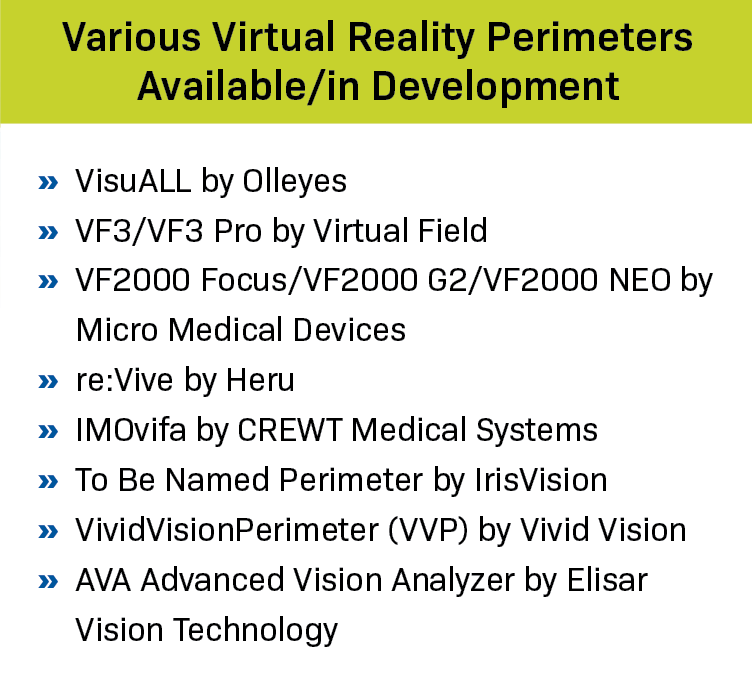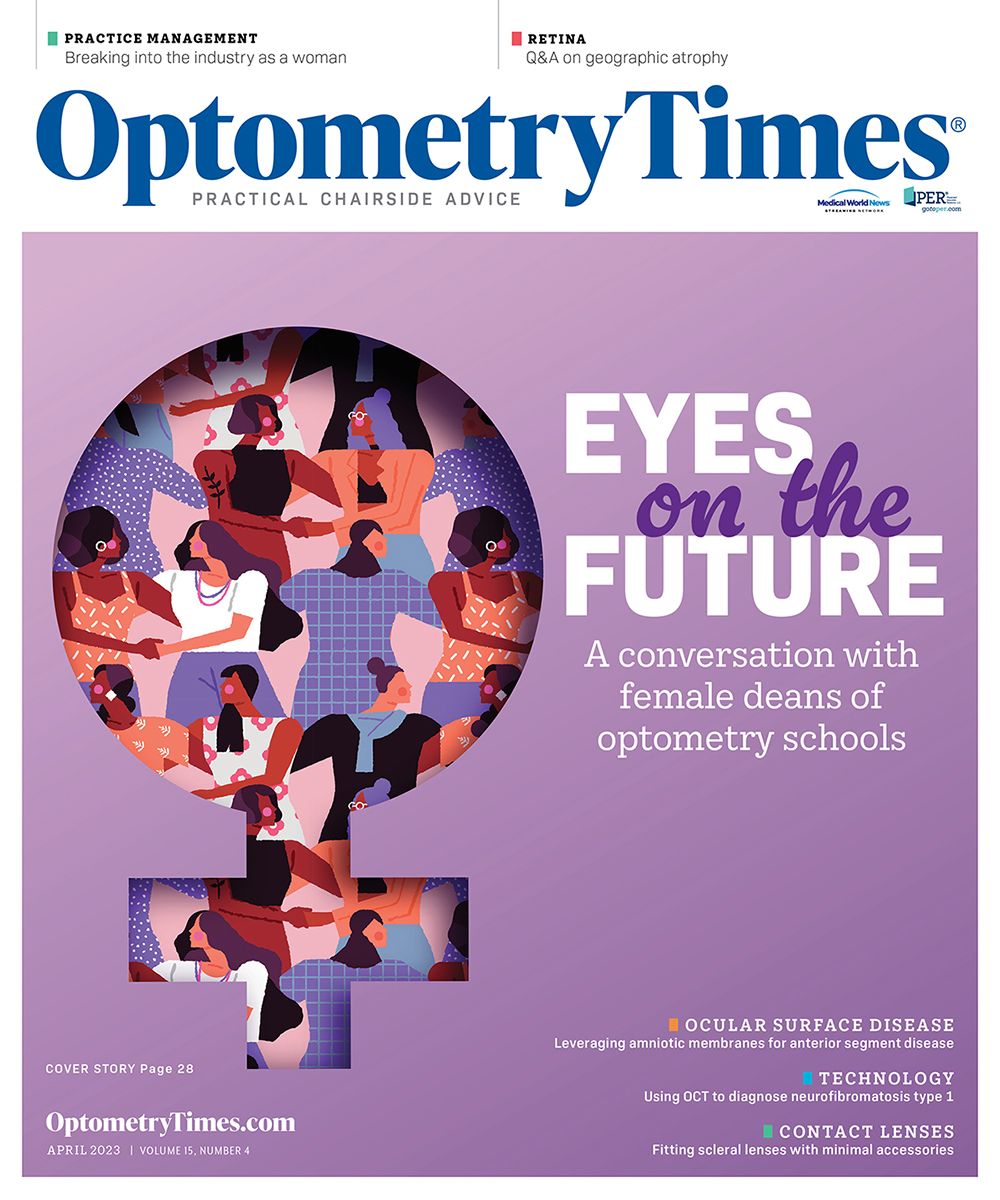Going virtual with visual field perimeters
Step up your standard of care, free up office space, and exceed patient expectations by taking advantage of these tools.
Numerous companies now offer VR perimeters with different testing modules in a variety of business models. (Image credit: Adobe Stock/insta_photos)

In early 2021, one of our visual field perimeters developed a technical problem. We contacted the manufacturer, who remotely determined it was necessary to send it in for further evaluation and repair, which we did. After a few days, we were notified a part needed to be replaced, but it was out of warranty and due to supply chain issues, the repair could not be completed, and the unit returned to us for at least another 2 months. We requested a loaner, willing to pay a loaner fee, but the company did not have one available at the time.
Our practice provides a high percentage of medical eye care, managing a large volume of patients with glaucoma and age-related macular degeneration (AMD), so our visual field perimeter is a critically important instrument for ensuring quality outcomes. Not having access to it would negatively affect quality of care, inconvenience patients who would have to be rescheduled and/or return for a separate visual field-testing appointment, and adversely affect practice revenue, so we began exploring our options.
Purchasing a new visual field perimeter was cost heavy, with list prices of $18,000 to $24,000, depending on the make and model, versus the estimated cost of the repair ($2000 plus shipping), so we quickly eliminated that option. Certified refurbished perimeters were slightly less expensive, but inventory was extremely limited or simply unavailable at the time, so that was not a viable option either. Secondhand instruments were available from various sources for $4000 to $10,000, again depending on make and model, but often came with little to no warranty or service options, which made them less appealing, as well. There are some ophthalmic companies (e.g., KWIPPED) that will rent equipment such as perimeters on a month-to-month basis, but I was unaware of them at the time. Keep this option in mind as you do your due diligence should you find yourself in a similar situation and are unable to purchase or lease needed equipment for any reason.
Figure. VisuALL virtual reality perimeter by Olleyes. (Photo courtesy of Olleyes)

I have had the opportunity to lecture at continuing education meetings over the years, and one of my favorite topics has always been new and emerging ophthalmic technologies and treatments. As a result, I had stayed abreast of the development of virtual reality (VR) and/or augmented reality visual field perimeters for quite some time and decided to see where things were. Thankfully, the VisuAll from Olleyes had just recently received FDA approval and launched at a price point of less than $10,000, with a free 30-day trial (Figure). Software upgrades were included in the purchase price as well, along with a multiyear warranty that covered hardware replacement. This headset-based VR perimeter included a wireless, Bluetooth-connected “clicker” and a laptop, and boasted standard visual field-testing protocols (ie, 30-2, 24-2, 10-2) with the ability to wirelessly upload results into electronic health records (EHRs). Additionally, other features such as contrast sensitivity testing were also available.
I contacted Olleyes and arranged for the 30-day trial, thinking that at a minimum, we would be able to try this new technology firsthand and risk free, while at the same time continuing to provide the standard of care to our patients without inconveniencing them or affecting practice revenue flow. The unit arrived and a brief online training was provided for our doctors and staff by the company’s sales representative.
The main feature I was intrigued by was the unit’s portability, which also allowed it to qualify for the Americans with Disabilities Act (ADA) tax credit. Like many established practices, we had grown and expanded over the years, with physical space in the office becoming a premium. Standard visual field perimeters have historically been some of the largest pieces of equipment in optometric offices, requiring a dedicated room in which to house them. Our current visual field had been in a special testing room shared with our optical coherence tomographer, which created some scheduling bottlenecks, as both could not be used concurrently. Our old visual field tended to take about 15 minutes to perform to input patient data, provide patient instructions, switch between the eyes, and actually perform the test; however, this new VR perimeter boasted a shorter testing time, could quickly test each eye, and was portable, meaning it could be performed in the exam chair in 8-10 minutes while the patient was waiting to see the doctor. This freed up more office space and eliminated bottlenecks in the special testing room, while also eliminating the challenges some wheelchair-bound and larger patients had in physically situating in our previous visual field. I also loved how easy it was to upload the results into our EHR, not to mention the “wow” factor it delivered to patients.
Advantages of a VR perimeter:
» Less cost to purchase new
» Shorter testing times
» Portability, allowing it to be used in the exam chair while a patient waits to see the doctor
» Familiar testing protocols and test result printouts
» Eligibility for ADA tax credit
» Direct upload of results to EHR
» Additional capabilities beyond visual fields alone (e.g., contrast sensitivity, visual acuity, color vision, dark adaptation, pupil testing, etc.)
» “Wow” factor for patients
My main concerns were how easy it would be for patients to perform the test (especially for our older patients), how reliable and comparable to our previous visual field the results would be, and how easy it would be to sanitize given we were in the second wave of the COVID-19 pandemic at the time. I was pleasantly surprised that there was no significant difference in our patients’ ability to perform perimetry using a VR perimeter. There are always some patients who are poor visual field test takers, but we did not encounter any increased number of patients unable to reliably perform VR perimetry. Further, data from multiple studies have now shown that headset-based VR perimetry results are comparable with those of traditional visual field perimeters,1-3 with results presented in traditional printout formats. As for sanitizing, the VR perimeter was actually easier to disinfect between patients than our traditional unit.
The only thing I was a little underwhelmed by in this first-generation VR perimeter was the laptop that was included, which had a small keyboard and made the interface for entering patient demographics a little clunky. Overall, this VR perimeter far exceeded my expectations (and its newest model has gone even further).
Table

Numerous companies now offer VR perimeters with different testing modules in a variety of business models (Table). List prices range from $8000 to $16,000, depending on advanced options such as eye tracking, high-definition screens, color vision testing, dark adaptation testing, and/or various artificial intelligence options. Some hardware models can be leased or rented month to month versus an outright purchased, and some companies offer a-la-carte monthly subscription services based on which testing programs you desire access to (ie, visual field testing, dark adaptation testing, color vision testing, etc). Other companies are developing smaller and lighter headsets that tend to be frame mounted versus the larger Oculus Rift–based headsets now in use.

In the end, VR perimetry is here to stay and offers numerous advantages to patients and practices alike, allowing standards of care to be maintained, perimetry to be performed more efficiently, office space to be freed up, and patient expectations to be exceeded. If you have not tried one out for yourself, you owe it to your patients and your practice to do so.
References
1. Stapelfeldt J, Kucur SS, Huber N, Höhn R, Sznitman R. Virtual reality-based and conventional visual field examination comparison in healthy and glaucoma patients. Transl Vis Sci Technol. 2021;10(12):10. doi:10.1167/tvst.10.12.10
2. Montelongo M, Gonzalez A, Morgenstern F, Donahue SP, Groth SL. A virtual reality-based automated perimeter, device, and pilot study. Transl Vis Sci Technol. 2021;10(3):20. doi:10.1167/tvst.10.3.20
3. Razeghinejad R, Gonzalez-Garcia A, Myers JS, Katz LJ. Preliminary report on a novel virtual reality perimeter compared with standard automated perimetry. J Glaucoma. 2021;30(1):17-23. doi:10.1097/IJG.0000000000001670

Newsletter
Want more insights like this? Subscribe to Optometry Times and get clinical pearls and practice tips delivered straight to your inbox.